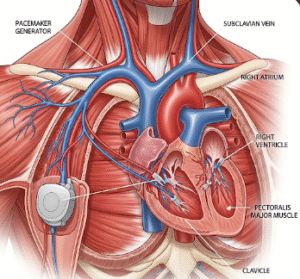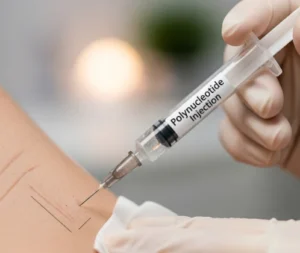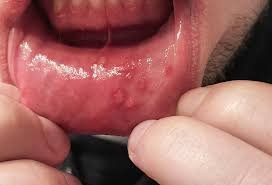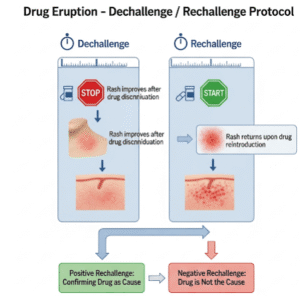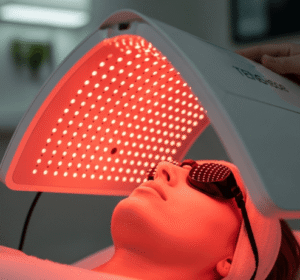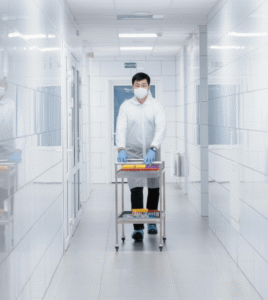What It Is
Temple Thread Support is a minimally invasive thread lift procedure that targets the temple area — the region between the outer corner of the eye, the hairline, and the brow. The temples are often overlooked in facial rejuvenation, yet they play a key role in facial balance, brow support, and eye shape.
Using absorbable threads made of PDO (Polydioxanone), PLLA (Poly-L-Lactic Acid), or PCL (Polycaprolactone), temple thread support helps to:
- Lift and stabilize the outer brow and eye area.
- Provide support to hollow temples that lose volume with age.
- Stimulate collagen, elastin, and hyaluronic acid production in the temple region.
- Create a youthful, harmonious contour by smoothing the transition between the brows, eyes, and upper cheeks.
In Korea, temple thread support is often combined with fox eye thread lifts, brow lifts, or midface thread lifts to achieve a natural yet noticeable rejuvenation.
Why It’s Done
Patients undergo temple thread support for both anti-aging and contouring purposes:
➝ Brow lifting → Provides upward support to drooping brows.
➝ Fox/cat eye shaping → Creates lifted, elongated eye shapes when combined with outer brow lift.
➝ Temple hollowing correction → Improves sunken temples, restoring youthful fullness.
➝ Eye rejuvenation → Reduces tired, droopy appearance around the eyes.
➝ Facial balancing → Creates harmony between the upper and mid-face.
➝ Preventative aging → Younger patients in Korea use it to maintain brow support and prevent sagging.
In Korean aesthetics, a lifted outer brow and smooth temple area are associated with youth, beauty, and freshness, making temple thread support a key add-on treatment in holistic anti-aging plans.
Alternatives
While temple thread support is effective, alternatives or complementary procedures may also be considered:
- Dermal fillers (hyaluronic acid, Sculptra, Radiesse) → Add volume to hollow temples but do not lift.
- PDO mono threads → Stimulate collagen in temples but less lifting power.
- PLLA or PCL threads → Longer-lasting support for advanced aging.
- HIFU (Ultherapy, Shurink, Doublo) → Tightens deeper tissue around temples and brows.
- Botox brow lift → Provides temporary elevation but no structural support.
- Surgical brow lift or temple lift → Permanent solution for severe sagging.
In Korea, temple thread support is often combined with other treatments:
- Temple threads + Fox Eye Lift → Outer eye reshaping.
- Temple threads + Fillers → Structural lift plus volumizing hollows.
- Temple threads + HIFU/Thermage → Collagen remodeling plus structural support.
Preparation
Preparation ensures both safety and effectiveness:
➝ Consultation & mapping → Doctors analyze temple volume, brow position, and eye contour.
➝ Medical history review → Patients disclose medications, prior procedures, or allergies.
➝ Avoid blood thinners → Stop aspirin, ibuprofen, or supplements 5–7 days before (with medical guidance).
➝ No alcohol or smoking → For at least 48 hours before treatment.
➝ Skin prep → Avoid retinoids, acids, and harsh exfoliants for 3–5 days.
➝ Numbing → Local anesthesia is applied at the temple area.
How It’s Done
A temple thread support procedure typically lasts 30–60 minutes:
- Cleansing & sterilization → The temple and brow area are disinfected.
- Local anesthesia → Applied at insertion points.
- Thread insertion →
- Threads are inserted via blunt cannulas into the temple and brow area.
- Barbed threads provide lift; mono or screw threads may add support and collagen stimulation.
- Adjustment → Threads are gently tightened to lift the temple and outer brow.
- Finishing → Excess thread ends are cut, and cooling packs or serums are applied.
Treatment plan:
- One session → Provides immediate support and lift.
- Maintenance → PDO: every 12–18 months; PLLA: 18–24 months; PCL: 24–36 months.
Recovery
Recovery is generally minimal and faster than surgical temple lifts:
- Immediately after → Visible lift; mild swelling and tightness.
- Day 1–7 → Bruising, tenderness, or dimpling around temples may appear.
- Week 2–3 → Threads settle, irregularities smooth out.
- Month 1–3 → Collagen remodeling improves firmness and skin elasticity.
- Month 6–12 → Natural results peak, blending seamlessly into facial contours.
Aftercare recommendations:
➝ Avoid rubbing temples or pulling at brows for 1–2 weeks.
➝ Sleep on your back with head elevated for the first week.
➝ Apply ice packs in the first 24 hours to reduce swelling.
➝ Avoid alcohol, saunas, and strenuous exercise for 1–2 weeks.
➝ Use SPF 50+ sunscreen daily on temples and brow area.
Complications
Temple thread support is safe when performed by experts, but risks include:
➝ Bruising and swelling → Common, temporary.
➝ Skin dimpling → Resolves in 1–2 weeks.
➝ Thread visibility → Rare, minimized with deeper placement.
➝ Asymmetry → Correctable with adjustment.
➝ Infection → Very rare in sterile conditions.
Korean clinics minimize risks by using FDA/KFDA-approved threads, advanced insertion angles, and precise facial mapping.
Treatment Options in Korea
Korea is one of the top destinations for thread lifts, and temple thread support is widely available as part of anti-aging and eye-rejuvenation packages.
1. Types of Threads Used
- PDO threads → Affordable, collagen stimulation, last 12–18 months.
- PLLA threads → Moderate durability, last 18–24 months.
- PCL threads → Premium, long-lasting up to 36 months.
Final Thoughts
Temple Thread Support in Korea is a highly effective, minimally invasive procedure that restores brow support, lifts the outer eye area, and corrects temple hollowness. By using absorbable PDO, PLLA, or PCL threads, it delivers both immediate lift and long-term collagen regeneration.
Korean clinics have refined this treatment by integrating it with fox eye lifts, fillers, and skin tightening technologies, ensuring safe, subtle, and natural results. For patients seeking youthful eye rejuvenation and facial harmony, temple thread support in Korea is among the best choices worldwide.


